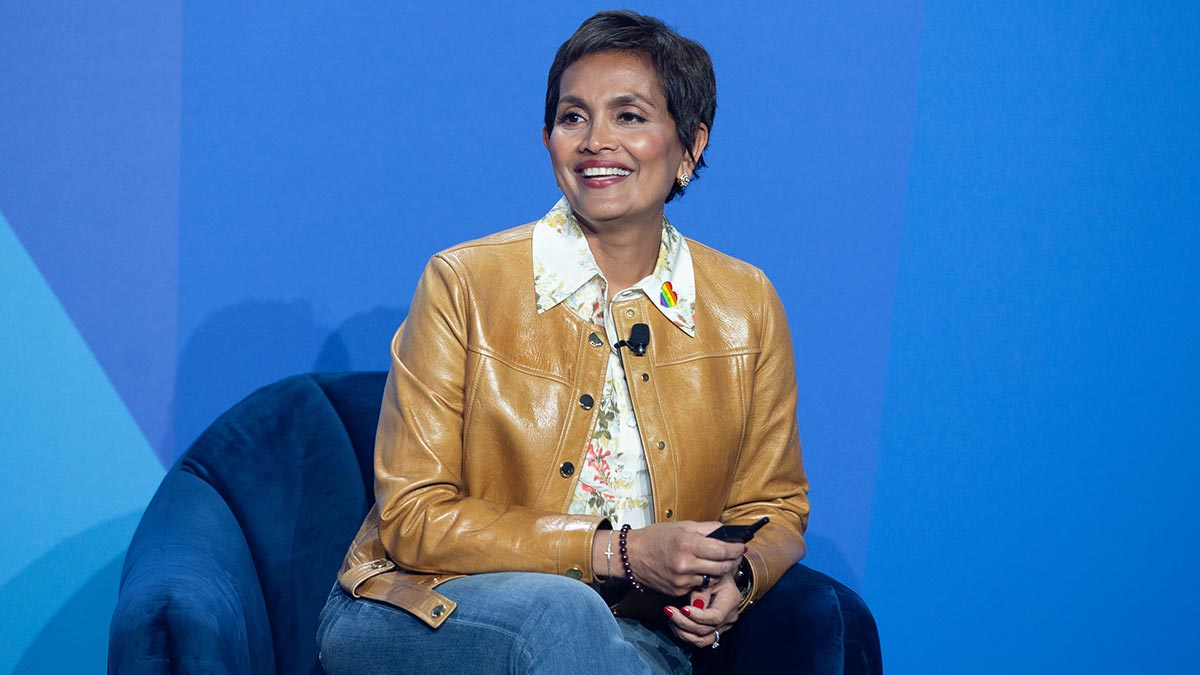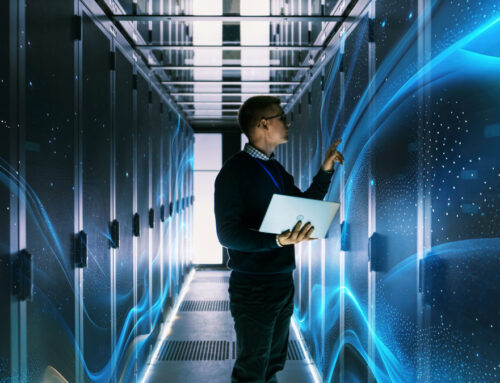As Cisco pushes the boundaries towards a hyperconnected future, ethics, privacy, and sustainability inform every decision.More RSS Feeds: https://newsroom.cisco.com/c/r/newsroom/en/us/rss-feeds.html
Cisco has been an innovation leader on many fronts and for many decades. We do it for our customers. And we believe that innovation can be a force for positive change — toward a world that’s more inclusive, equitable, and sustainable.
I see the next wave of accelerated change centered on four big transitions: hyperconnectivity, security, artificial intelligence, and quantum computing. Each can go a long way toward defining our future, and each is an area in which Cisco is delivering significant progress and leadership.
Toward a hyperconnected world
Our planet is increasingly hyperconnected, meaning that just about everything that can be connected will be. In 2022 alone, the number of global Internet of Things (IoT) connections rose 18 percent, to 14.3 billion endpoints. This upsurge in connections can support an increasingly automated world that’s more efficient, resilient, secure, and sustainable. Smart buildings, smart cities, and renewable energy are just a few of the areas that will benefit.
To that end, Cisco is driving solutions that will support this hyperconnected future, one in which hybrid and multicloud environments are the de facto operating models and more people than ever before are securely connected.
At Cisco, we’re creating solutions like AI-powered predictive networks. These can manage and secure massive torrents of data, while lessening the complexity of highly distributed endpoints, clouds, applications, and users. Full-stack observability (FSO) enables acute visibility into these disparate environments, while also delivering real-time business insights into users, apps, and infrastructures. Routed optical networking and Silicon One promise great increases in networking power, connecting more people and with great reductions in energy usage.
Securing the future
As complexity mounts, the attack surface expands.
So, at Cisco, simplicity is a key part of our security strategy. To keep more people secure, we need to frustrate hackers, while making life easier for end users. So, our platform-based solutions seamlessly monitor and protect the most complex environments, whether customers are using SaaS applications, websites, or internal corporate resources.
Among those offerings is Security Cloud. By providing consistent policy and malware enforcement, it stays ahead of threats by enabling visibility and control across complex, hybrid-cloud environments.
Similarly, Cisco’s XDR offering brings simplicity to multi-vendor, multi-vector, multi-cloud security environments. And by employing powerful AI predictive technologies, it stops advanced threats before they disrupt businesses — and lives.
AI that’s transformative — and responsible
At Cisco, we’re constantly pushing the boundaries of artificial intelligence and machine learning. AI is essential to manage, secure, and optimize the vast amounts of data that cross our networks. And we use it to power everything from automation, baselining, and vulnerability assessments to anomaly detection and noise reduction.
We’re also supporting our customers in their AI journeys. Generative AI, for example, brings many new opportunities for businesses — along with new challenges. This paradigm shift places new demands on high-performance computing, and many tools we have used in the past cannot scale for the demands of AI.
That’s why we’re building a powerful, flexible network that can scale to the demands of AI. Silicon One will power the most-intensive AI networks and give customers the flexibility to use multiple architectures, whether standard ethernet, enhanced ethernet or fully scheduled fabrics. This allows customers to make data-driven decisions based on their own needs, without locking them into narrow deployment models.
On the hybrid work front, AI helps Webex create the best possible experience, with features like facial recognition and real-time translation. And thanks to AI, Webex has removed nearly 100 billion minutes of background noise from calls and meetings. Moving forward, it will power amazing immersive experiences from Webex Hologram and AI personal assistants.
I can’t wait to experience the many benefits from AI to come. But transformative technologies like generative AI need to be used responsibly. Data privacy, security, confidentiality, IP rights, and racial, gender, or other types of bias are just a few of the issues that arise when AI is not responsibly programmed or implemented.
As generative AI becomes more pervasive in our lives, additional issues will arise. Unrestrained generative AI could potentially infringe on privacy, create inappropriate or biased content, sow misinformation, or expose users to potential liabilities. Ethics, privacy, and legal issues are already making headlines, as generative AI infringes on copyrights or compromises data privacy. Moving forward, capabilities like voice cloning, when combined with generative AI, could create more insidious problems.
At Cisco, we believe that responsible AI is non-negotiable. And our actions set us apart. Cisco’s Responsible AI Framework sets clear guidelines for transparency, fairness, accountability, privacy, security and reliability. And ethics, privacy, and respect drive all our product designs and decisions.
The challenges around AI are steep. But the benefits remain huge. We welcome our industry peers in helping us build an AI future that’s ethical and responsible.
A Quantum Revolution
With capabilities that could far surpass “classical” computing, quantum computing has huge implications for everything from climate research and medical diagnoses to astrophysics and automation.
However, quantum raises alarms. A quantum computer could potentially crack the most advanced encryptions in minutes.
With its partners in academia and government, Cisco’s Quantum Lab is helping to make quantum a reality. But doing so in a way that’s responsible, secure, and scalable for down-to-earth business and enterprise applications.
To counter the threat of quantum cyberattacks, the Quantum Lab is exploring technologies like Quantum Key Distribution (QKD) to ensure scalable, provable security. As for quantum networks themselves, Cisco envisions large-scale quantum clusters. This modular approach would boost the power and scalability of quantum to meet the most massive challenges. And Cisco would apply its expertise in photonics to the critical interconnects to tie those quantum networks together.
Moreover, photonics can bridge quantum and classical networks, seamlessly and securely. With millions of optical ports already powering the global internet, Cisco is in a prime position to ensure provable, tamper-proof secure connections in the quantum era, by combining photonics with quantum protocols such as QKD.
While quantum is not as evolved as the other technologies we’ve discussed, it’s developing fast. And as with hyperconnectivity, security, and AI, quantum is a tech transition where awareness, ethics, and cutting-edge innovation must converge.
Ahead of us lie big challenges. But I’m excited about how we can help drive these major tech transitions in positive directions. Together with the commitment and ideas of our customers and partners, there’s no limit to what we can accomplish.
Cisco Newsroom: Enterprise Networking As Cisco pushes the boundaries towards a hyperconnected future, ethics, privacy, and sustainability inform every decision.More RSS Feeds: https://newsroom.cisco.com/c/r/newsroom/en/us/rss-feeds.html
















Leave A Comment